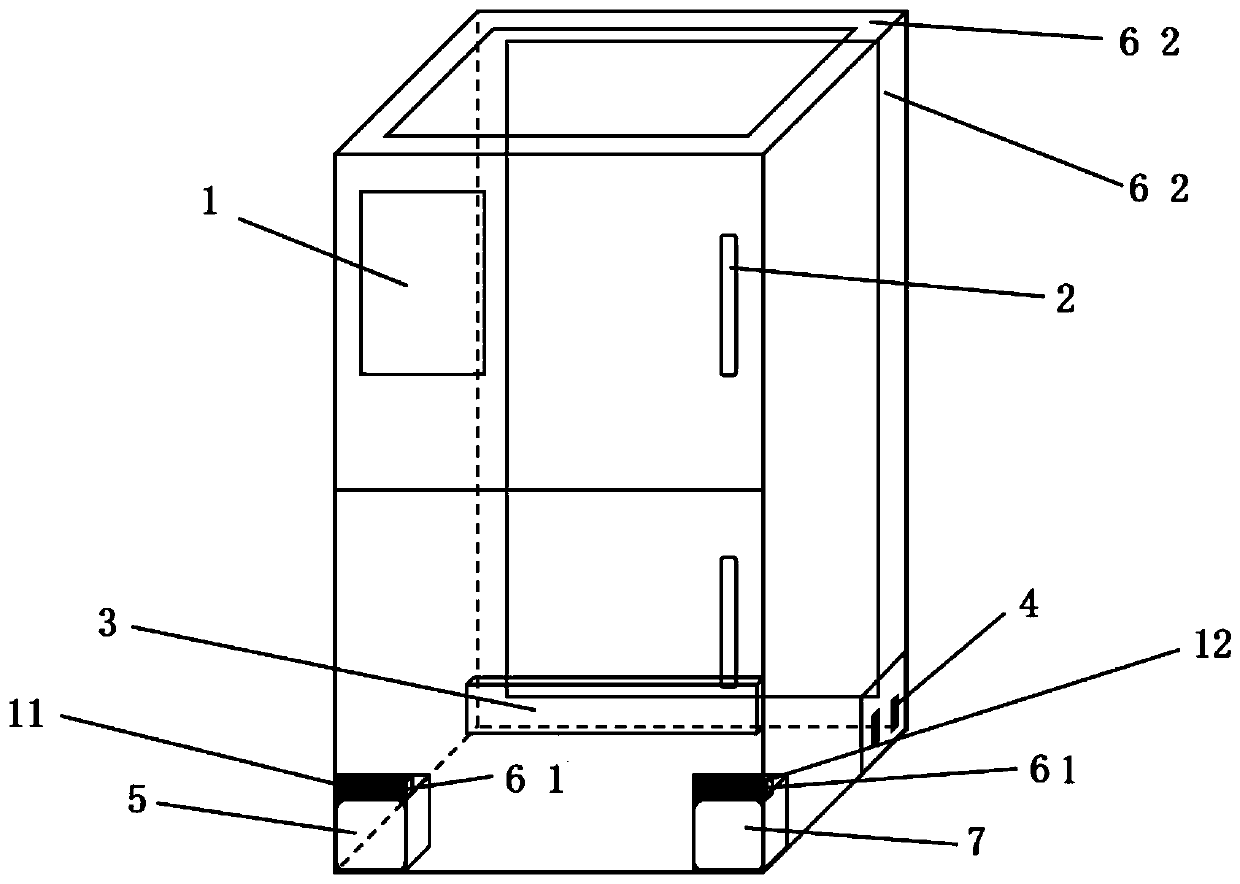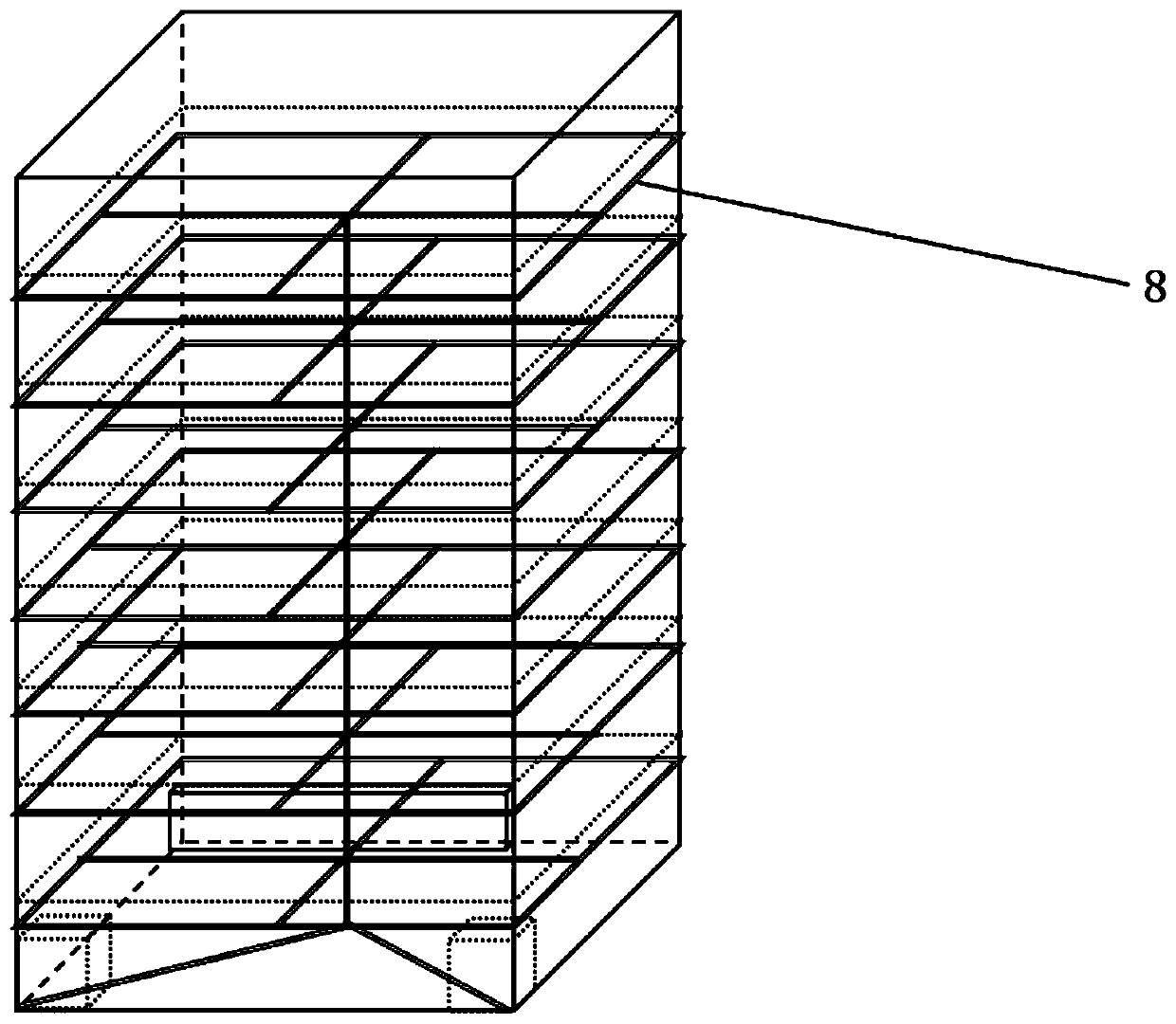Intelligent refrigerator for efficient strain preservation
A technology of smart refrigerators and high-efficiency bacteria strains, which is applied in the direction of household refrigerators, coolers, lighting and heating equipment, etc., can solve the problems of unfavorable laboratory sample management and extraction efficiency, power loss, and more power consumption. Achieve the effect of reducing the risk of frostbite accidents, reducing power loss, and avoiding confusion
- Summary
- Abstract
- Description
- Claims
- Application Information
AI Technical Summary
Problems solved by technology
Method used
Image
Examples
Embodiment 1
[0036] when taking samples. Using an ordinary refrigerator, the experimenter needs to open the refrigerator door, and it takes about a minute to find and take the sample. The power of the ultra-low temperature refrigerator is about 3000W when it is working, and the power is about zero when it is in standby. Suppose the refrigerator is switched on and off 20 times a day. During these 20 minutes, the outside world is connected to the interior of the refrigerator. The refrigerator needs to work continuously to maintain a constant temperature, and consumes 1 kilowatt-hour of electricity. And when using the intelligent refrigerator for preserving high-efficiency strains of the present invention, since the refrigerator door is not largely opened, the temperature in the refrigerator is almost constant. In these 20 minutes, the refrigerator is in a standby state and consumes almost no power (the central control system in the refrigerator consumes far It is less than the power consum...
Embodiment 2
[0038] Suppose there is a bottle of yeast with number 002 that needs to be stored. Such as Figure 4 As shown in the process shown, the experimenter first presses the button at the entrance, and the slide rail and roller control system in the central control system receives an instruction to transport an empty small square to the entrance through the guide rail roller. The small door at the entrance opens, and the small square pops up. The experimenter puts in the vial of yeast and pushes the small square into the freezer. The small door at the entrance closes automatically. The touch-type handwriting input area at the upper left corner of the refrigerator door is activated, and the experimenter enters information (either in the handwriting input area or on a connected computer) (yeast; serial number 002; 1.5ml centrifuge tube; one bottle; Configured on July 26, 2019; Yeast is a single-celled fungus, not a unit of phylogenetic evolution. A tiny single-celled microorganism i...
Embodiment 3
[0040] When the vial of yeast numbered 002 is taken out, the sample data in the small box in the database will be transferred to the column of taken out. When the experimenter saves the bottle of yeast again, he inputs the information "Number 002 Yeast" in the touch-type handwriting input area (or in the external computer), and the information input and output and feedback system matches the corresponding item in the column that has been taken out. It pops up in the area, you can click this option to add directly, and you can add other information, such as "the first sample was taken on July 27".
PUM
 Login to View More
Login to View More Abstract
Description
Claims
Application Information
 Login to View More
Login to View More - R&D
- Intellectual Property
- Life Sciences
- Materials
- Tech Scout
- Unparalleled Data Quality
- Higher Quality Content
- 60% Fewer Hallucinations
Browse by: Latest US Patents, China's latest patents, Technical Efficacy Thesaurus, Application Domain, Technology Topic, Popular Technical Reports.
© 2025 PatSnap. All rights reserved.Legal|Privacy policy|Modern Slavery Act Transparency Statement|Sitemap|About US| Contact US: help@patsnap.com



